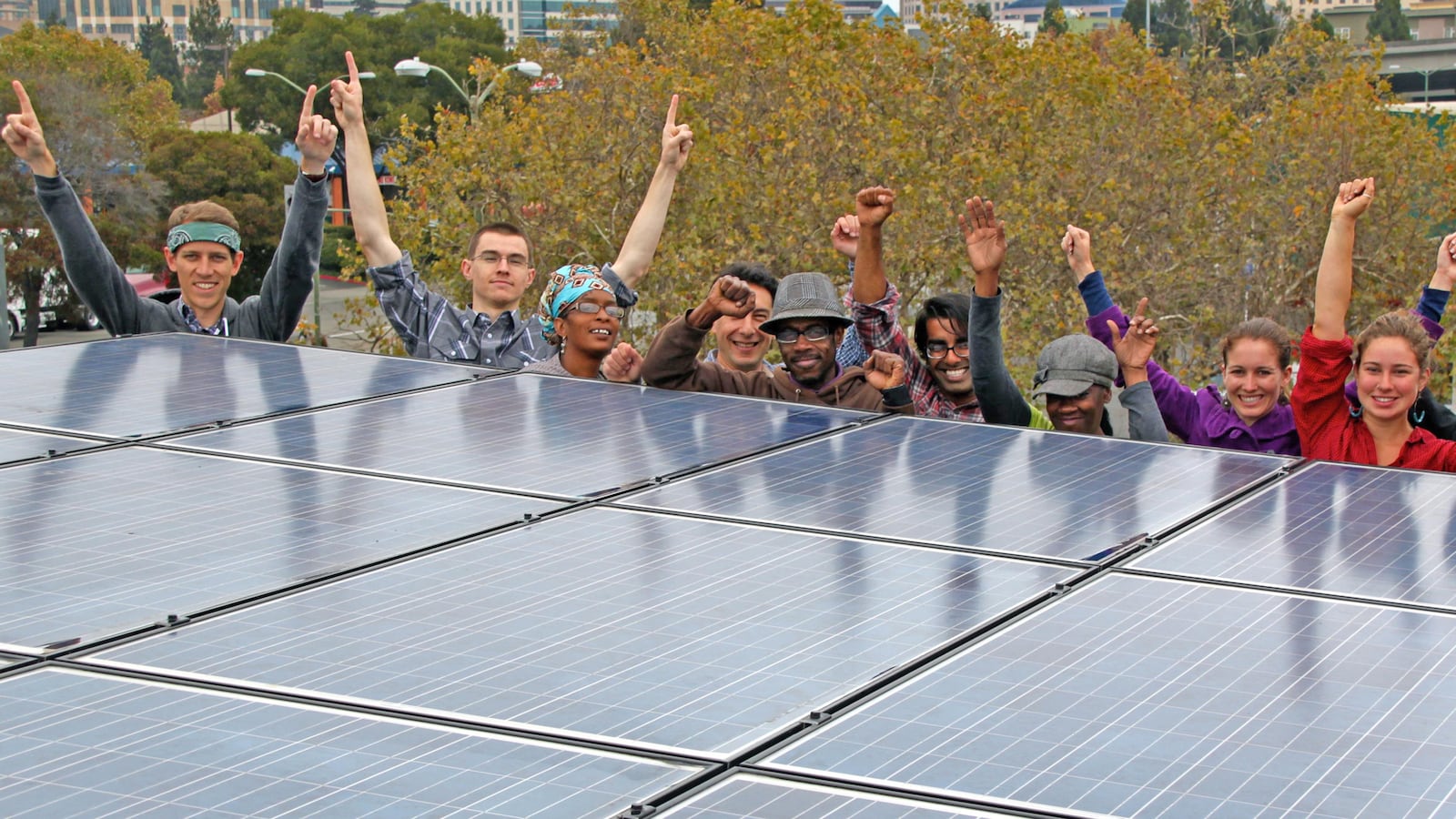It’s hard to get a 4.5 percent annual return on your money without taking too much risk. Banks pay less than 1 percent. Blue-chip stocks pay dividends at about2 percent. The U.S. government borrows for about 30 years at 3 percent.

But I found one way to get a decent interest rate while also boosting my personal green credentials: I bought a very small piece of a solar electric power plant in New Jersey.
Solar power is growing by leaps and bounds. But it requires a large personal investment—i.e. spend $15,000, take advantage of tax credits and rebates to put a small system on your roof. And it only pays to put panels homes that have south-facing roofs and aren’t surrounded by trees. Or it requires a large corporate investment, like the giant retailers putting arrays on their giant roofs, or the huge farms sprouting in the desert. There are very few options for people with limited resources.
That’s where Mosaic comes in. Essentially, it’s crowdsourcing investments for small-scale solar projects, like a Kickstarter for green energy. But it isn’t seeking donations, and it’s not offering silly rewards like tote bags or invitations to launch parties. Rather, it’s offering fixed financial returns, much like a corporate bond, or a bond backed by a mortgage. It’s an example of financial engineering meeting electrical engineering. “Our mission is to create shared prosperity through clean energy,” said Mosaic’s CEO Dan Rosen. “We see a huge opportunity for transitioning our world to clean energy ahead of us and we want to make it possible for communities to prosper from this massive transformation.”
When you construct a solar energy system, you’re basically constructing a stream of income that will flow over a period of many years. But you need a lot of money up front in order to build it. Mosaic is trying to bridge that gap. Among the many models being used to finance solar development is one in which a company builds and owns the solar array on the roof of another company’s store, or a government building, or a public agency, and then agrees to sell the power to the building owner at a fixed price for a long period of time. Mosaic is in the business of providing financing to the people who build the arrays. It raises funds not from venture capitalists or banks, but from individuals. And as the solar array owner receives revenue, it pays back the loan that Mosaic made. Mosaic then makes payments back to its investors. (Here’s a brief description of how it works.)
Started in 2011, and based in Oakland, Mosaic did a bunch of pilot projects in California—like putting 120 panels on the Asian Resource Center in Oakland, California. Then at the beginning of this year, it launched real projects, like one in which 293 investors kicked in $95,275 (that’s an average of $325) to build a 78 kilowatt installation on an affordable housing project in Salinas, California.
To learn about Mosaic in more detail, I opened an account. Most of the projects are available only to investors who live in California. But some are available for people out of state. So I was eligible to buy a piece of a $350,000 loan backing a 487-kilowatt, 1,694-panel system that was constructed on a convention center in Wildwood, New Jersey, and went into operation last year. The promised return: 4.5 percent interest, and the return of principal over a 114-month period.
On the one hand, these are risky investments. And this article is in no way, shape, or form, a recommendation. I simply did this as an exercise to see how it works. These investments are not guaranteed by any third party, and they don’t have much of a track record yet. All sorts of things can go wrong—defective panels, the array could get destroyed by a hurricane, etc. These securities don’t trade, so you’re locking your money up for 10 years or more. These are securities for people who are content to collect interest payments over a long period of time, and who want to make some money in exchange for helping to make the planet a little greener.
On the other hand, this investment is constructed in a pretty conservative manner. Solar panel systems have been around for a while, and tend to last up to 20 years. The New Jersey Sports and Exposition Authority and the Greater Wildwoods Tourism Improvement and Development Authority have a lease deal with Energy Finance Company, the outfit that built the array, to purchase the juice the panels create for 20 years at a fixed rate. The array produces about one quarter of the convention center’s electricity needs. That means Energy Finance, which borrowed the money from Mosaic, will have a reliable stream of income with which to make the payments.
In addition, Mosaic has built in some margin for error. It lent money to Energy Finance at a 5.5 percent annual rate, but is promising to pay returns of 4.5 percent to its investors. That one percent different helps build up reserves and will allow Mosaic to turn a profit.
The demand is clearly there. The first small projects released in January sold out in less than a day. So far, says Rosen, the projects have a 100 percent on-time payment record. All in, Mosaic has raised more than $2 million for a dozen-odd projects. Earlier this month, Mosaic started a new initiative to crowdsource solar arrays on schools. The first will be a 251-kilowatt installation on a University of Florida housing building. The challenge is to scale these up, to do dozens and hundreds of projects rather than a few at a time.
In March I “invested” $100 in the Wildwood project, joining 313 other people. Thus far, I have received payments every month, totaling $1.13 in interest and $2.45 in principal. Another nine years or so and I’ll get all my money back, plus interest. (In the coming months, I’ll revisit the performance of this investment.) Investors also have to pay a one percent annual “platform fee”—to help Mosaic cover costs. So the annual return I’m getting is more like 3.5 percent. But in the age of Bernanke, that’s a much better return than I could get from other fixed-income investments. And I’m able to say I own a piece of a power plant.




